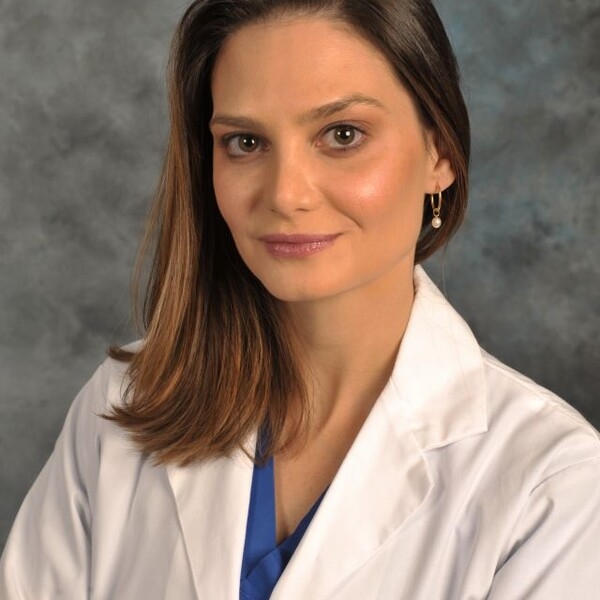Lung Transplantation
The Toronto Lung Transplant Program performed the first durable human lung transplant in 1983, which was a single lung transplant and in 1986 began bilateral lung transplantation. Toronto continues to maintain one of the most prolific programs worldwide, and patients with a wide spectrum of end-stage pulmonary conditions are transplanted. By 2021, over 2600 transplants have been performed, and the distribution of recipients’ diagnoses continues to evolve.
While lung transplantation is the only option for most, some of these patients have other surgical options including lung volume reduction for anatomically suitable patients with severe emphysema while pulmonary thromboendarterectomy is the treatment of choice for patients with pulmonary hypertension due to chronic thromboembolic disease. The anesthetic care of patients with end-stage lung disease is challenging and the contribution of members of the department of anesthesia and pain management has been essential to the success of these programs. The anesthesiologist’s role includes evaluation and selection of transplant candidates, intra-operative care and perioperative critical care. Management of immediate postoperative pain and the identification and early intervention in cases of chronic post-operative pain are a priority.
Abdominal Organ Transplantation
The abdominal organ transplant program includes 4 separate but affiliated programs: liver, kidney, pancreas and small bowel transplantation. The surgeons have organized themselves in a similar structure and our amalgamation has allow us to work together better both clinically and academically. However, there is no doubt that we must consider further changes to our organization structure if we are to keep up with changes in this area of anesthesia. At the present we rely on a strong fellowship program to maintain our very high standards of care.
Central to abdominal organ transplant anesthesia is the liver transplantation program and we conduct approximately 200 cases per year. Despite a reduction in the number of deceased donors, the number of transplants is likely to increase by 25-50% in the next few years driven by the living donor transplants and the use of organ perfusion techniques. Normothermic regional perfusion will increase the viability of organs retrieved from deceased after cardiac death donors and the use of ex vivo perfusion will allow for the assessment of organ viability and resuscitation thereby increasing the number of organs consider acceptable or transplantation.
With this potential increase in liver transplant numbers, it is more important than ever that patients being considered for transplantation are thoroughly assessed and optimized prior to listing for transplantation. The patient with end-stage liver disease poses a unique challenge for preoperative cardiac assessment in particular. We have reviewed the evidence and proposed an algorithm for assessment that is being used clinically. Despite the implementation of this algorithm, we are activity conducting studies to look at the role of routine postoperative troponin and BNP measurement, the use of coronary calcium scores on plain chest and the intraoperative use of TEE. The results of this work will help to revise the assessment algorithm in the future.
Over the last five years, we have become more active in postoperative patient care with the expansion of the early extubation program for liver transplant recipients. Up to 50% of our transplant patients are initially managed in the postoperative care unit until they are ready for discharge to an intermediate care unit rather than being transferred to the medical intensive care unit. Based on our own data, patients benefit from early extubation and the hospital system is more flexible as a result. We are taking what we have learned to other centres and asking them to further develop an enhanced recovery program for liver transplantation.
The living donor program continues to be the largest program in North America and results for both donor and recipient are excellent. We have developed a quality database in conjunction with hepatology and surgery to follow the management and outcomes of the living donor population. Our own intraoperative management and postoperative pain management is a critical part of this quality improvement program.
The kidney transplant program like the other transplant services is in a period of rapid growth for both living and deceased donor transplantation. The preoperative assessment of potential recipients has required increase resource utilization in the preadmission clinic to keep pace with demand. Anesthesia has played an increasing role in patient assessment, perioperative management and fluid management. We have recently completed a study in kidney transplant recipients to help guide hemodynamic management. The possibility for continued academic exploration in this patient population is excellent and we are planning a multicenter study to further optimize kidney transplant recipients.
Pancreas and small bowel transplantation make up the final components of the abdominal organ transplantation anesthesia program. They have been on the outside as far as our clinical and academic focus is concerned, but we are planning to consider how anesthesia can enhance patient selection and recovery. This is particularly true for pancreas transplants, as the small bowel transplantation is done so rarely that the development of anesthesia considerations will likely remain on a case-by-case basis. There is much to do and our patients should be the beneficiaries.


Dr. Stuart McCluskey Dr. Carla Luzzi
Research and Education
The current research interests of the program are focused on perioperative blood management, optimizing postoperative management (fast-tracking, i.e. early extubation) and outcome prediction; in particular the risk of thromboembolic complications. The development of an intraoperative anesthetic liver transplant database with more than twenty years of data collected has allowed us to change practice based on the best available evidence. This year we combined our efforts with our surgical colleagues and real time data is collected directly into a joint data set.
The education program continues to be developed both internally and jointly with surgery and medicine. The fellowship program has been redesigned to be compatible with the recent Society for Advancement of Transplantation Anesthesia (SATA) standards (Nguyen-Buckley et al), to which our department were major contributors. Our fellows do a minimum of 50 transplants each to enable them to reach the highest level of certification under this scheme. We provide a comprehensive teaching program to cover the complex syndromes uniquely associated with end-stage liver disease, and mentorship in professional and academic development. Our fellows frequently attend the major transplant conferences and deliver prize-winning presentations. Recent graduates have taken staff positions in Canada, Australia, India, England and New Zealand. We maintain active links with our past fellows, facilitating the conduct of multi-centred international trials. We frequently receive applications for training on the recommendation of our past fellows, which speaks volumes about the quality of the educational experience we provide.
AOTA Fellowship:
https://www.uhn.ca/Surgery/Anesthesia/Anesthesia_Education/Abdominal_Organ_Transplant_Anesthesia_Fellowship
Publications
2. Crouch CE, Wilkey BJ, Hendrickse A, Kaizer AM, Schniedewind B, Christians U, Henthorn TK, Fernandez-Bustamante A. Lidocaine Intraoperative Infusion Pharmacokinetics during Partial Hepatectomy for Living Liver Donation. Anesthesiology. 2023;138:71-81. doi: 10.1097/ALN.0000000000004422
3. Carrier FM, Vincelette C, Trottier H, Amzallag E, Carr A, Chaudhury P, Dajani K, Fugere R, Giard JM, Gonzalez-Valencia N, et al. Perioperative clinical practice in liver transplantation: a cross-sectional survey. Can J Anaesth. 2023. doi: 10.1007/s12630-023-02499-y
4. Sakai T, Ko JS, Crouch CE, Kumar S, Choi GS, Hackl F, Han DH, Kaufman M, Kim SH, Luzzi C, et al. Perioperative management of living donor liver transplantation: Part 2 - Donors. Clin Transplant. 2022:e14690. doi: 10.1111/ctr.14690
5. Jimenez P, Kim SJ, McCluskey SA. Fluid management for kidney transplantation: is it really about more or less? Can J Anaesth. 2022;69:13-17. doi: 10.1007/s12630-021-02131-x
6. Muaddi H, Abreu P, Ivanics T, Claasen M, Yoon P, Gorgen A, Al-Adra D, Badenoch A, McCluskey S, Ghanekar A, et al. The effect of perioperative packed red blood cells transfusion on patient outcomes after liver transplant for hepatocellular carcinoma. HPB (Oxford). 2021. doi: 10.1016/j.hpb.2021.06.425
7. Haque ME, Badenoch AD, Orlov D, Selzner M, McCluskey SA. Predicting Early Extubation After Liver Transplantation: External Validation and Improved Generalizability of a Proposed Fast-track Score. Transplantation. 2021;105:2029-2036. doi: 10.1097/TP.0000000000003452
8. Ivanics T, Shubert CR, Muaddi H, Claasen M, Yoon P, Hansen BE, McCluskey SA, Sapisochin G. Blood Cell Salvage and Autotransfusion Does Not Worsen Oncologic Outcomes Following Liver Transplantation with Incidental Hepatocellular Carcinoma: A Propensity Score-Matched Analysis. Ann Surg Oncol. 2021. doi: 10.1245/s10434-021-09863-6
9. Kollmann D, Neong SF, Rosales R, Hansen BE, Sapisochin G, McCluskey S, Bhat M, Cattral MS, Lilly L, McGilvray ID, et al. Renal Dysfunction After Liver Transplantation: Effect of Donor Type. Liver Transpl. 2020;26:799-810. doi: 10.1002/lt.25755
10. Kollmann D, Linares-Cervantes I, Ganesh S, Rosales R, Hamar M, Goto T, Urbanellis P, Tessandier N, Boilard E, Bruguera C, et al. Normothermic Ex Vivo Liver Perfusion Prevents Intrahepatic Platelet Sequestration After Liver Transplantation. Transplantation. 2020;104:1177-1186. doi: 10.1097/TP.0000000000003194
11. Nguyen-Buckley C, Wray CL, Zerillo J, Gilliland S, Aniskevich S, Nicolau-Raducu R, Planinsic R, Srinivas C, Pretto EA, Jr., Mandell MS, et al. Recommendations From the Society for the Advancement of Transplant Anesthesiology: Liver Transplant Anesthesiology Fellowship Core Competencies and Milestones. Semin Cardiothorac Vasc Anesth. 2019;23:399-408. doi: 10.1177/1089253219868918
12 Linares I, Goldaracena N, Rosales R, Maza L, Kaths M, Kollmann D, Echeverri J, Selzner N, McCluskey SA, Sapisochin G, et al. Splenectomy as Flow Modulation Strategy and Risk Factors of De Novo Portal Vein Thrombosis in Adult-to-Adult Living Donor Liver Transplantation. Liver Transpl. 2018;24:1209-1220. doi: 10.1002/lt.25212
13. Corbella D, Toppin PJ, Ghanekar A, Ayach N, Schiff J, Van Rensburg A, McCluskey SA. Cardiac output-based fluid optimization for kidney transplant recipients: a proof-of-concept trial. Can J Anaesth. 2018;65:873-883. doi: 10.1007/s12630-018-1118-y
14. Gorgen A, Goldaracena N, Zhang W, Rosales R, Ghanekar A, Lilly L, Cattral M, Greig P, McCluskey S, McGilvray I, et al. Surgical Complications after Right Hepatectomy for Live Liver Donation: Largest Single-Center Western World Experience. Semin Liver Dis. 2018;38:134-144. doi: 10.1055/s-0038-1636932.
15. Kollmann D, Sapisochin G, Goldaracena N, Hansen BE, Rajakumar R, Selzner N, Bhat M, McCluskey S, Cattral MS, Greig PD, et al. Expanding the donor pool: Donation after circulatory death and living liver donation do not compromise the results of liver transplantation. Liver Transpl. 2018;24:779-789. doi: 10.1002/lt.25068
16. Barbas AS, Levy J, Mulvihill MS, Goldaracena N, Dib MJ, Al-Adra DP, Cattral MS, Ghanekar A, Greig PD, Grant DR, et al. Liver Transplantation Without Venovenous Bypass: Does Surgical Approach Matter? Transplant Direct. 2018;4:e348. doi: 10.1097/TXD.0000000000000776
17. Badenoch A, Sharma A, Gower S, Selzner M, Srinivas C, Wasowicz M, McCluskey SA. The Effectiveness and Safety of Tranexamic Acid in Orthotopic Liver Transplantation Clinical Practice: A Propensity Score Matched Cohort Study. Transplantation. 2018;101:1658-1665. doi: 10.1097/TP.0000000000001682